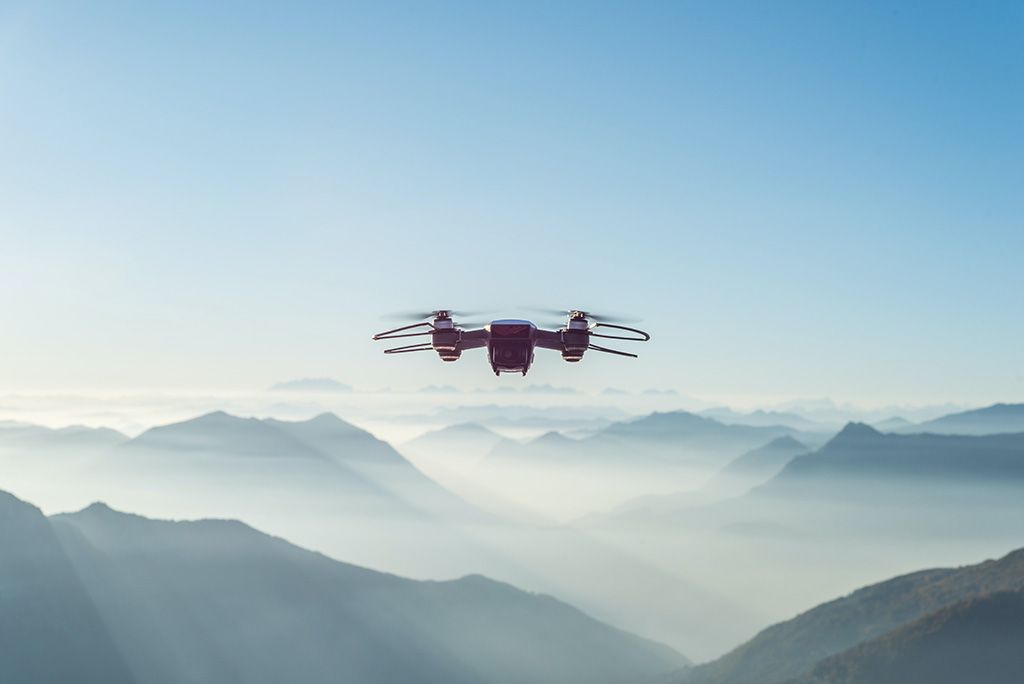Blog
What’s the Latest on Drone Insurance?
It's been nearly a decade since drones first burst onto the scene. Drones used to be something many of us initially considered too high-tech for ordinary aviation hobbyists and associated them more with military applications. However, the speed at which they have become commonplace across the globe in so many different industries (and for recreational purposes) has been nothing short of astonishing.
According to a recent Business Insider article, consumer drone shipments reached 29 million in 2021, with the total drone market size reaching $100 billion. In addition to their recreational use, drones are now used by agriculture, security, energy, law enforcement, construction, and entertainment industries. You can purchase a small, sophisticated drone with advanced photo and video capability for around $2,000, with prices increasing from there according to their specifications.
But how has this new technology altered the insurance landscape? This article offers the basics on drone insurance.

The Regulatory Environment for Drones
In 2016, the FAA released its new rules concerning small drone operations under 14 CFR Part 107 Small Unmanned Systems (commonly referred to as "Part 107"). The Part 107 rules apply to drones that weigh less than 55 pounds and are used for non-recreational purposes. They address how and where the drones can be operated and how to become a certified drone pilot.
These rules eased the cumbersome requirements and restrictions that had been in place up to that point, resulting in a flood of new commercial drone pilots and businesses.
Even for purely recreational flyers not subject to Part 107, there are several important rules and requirements they should be familiar with, including passing a safety test.
The Drone Insurance Market
When small drones became popular in the mid-2010s, there was a period of adjustment as insurance carriers tried different approaches to providing insurance. There were questions regarding coverage for drones operating commercially under what would eventually become Part 107.
Would coverage come from traditional Property and Casualty (P&C) insurers? Would it come from aviation specialty insurers? At first, the answer was both. Some of the traditional P&C carriers provided some limited General Liability (GL) coverage (and continue to do so). Although aviation insurers initially insured drones on conventional aircraft policy forms, most of them eventually developed drone policy forms. Written with that exposure in mind, these policies could respond to a wide variety of exposures unique to drone operators. For that reason, by 2022, nearly all drone policies are provided by aviation insurers.
In response to what has become a very high volume of small and usually straightforward drone policies, several aviation insurers have developed online portals that allow brokers or policyholders to input exposure details and quickly receive a quote. Additionally, some direct purchase options are now available online and through smartphone apps. In some cases, they even offer pay-by-the-hour options.
This first step in the process of procuring insurance for a drone is to assemble the necessary underwriting information.
This information can be provided via an old-fashioned insurance application via an online portal. The questions focus on six main areas:
- Particulars about the drone, i.e., year, make, model, value, and any information about payload or ground support equipment
- How the drone will be used and how often it will be flown
- Operator credentials, including the drone pilot’s licensing status, experience and training. This information is particularly important for Part 107 operators
- What liability limit is required, and will physical damage coverage for the drone be required
- In addition to the drone(s) that is being insured, could there occasionally be third parties hired to operate drones on behalf of the company? Or perhaps the occasional use of an employee’s drone on company business?
- Loss/accident history
What Are the Exposures to Consider?
Liability
The most significant exposure to the owner/operator of a drone, in terms of potential size, complexity and unpredictability of claims, is the liability to third parties. This exposure could be bodily injury or property damage liability arising from the ownership and use of the drone.
Current regulations help to minimize drone operations over populated areas and near airports (with some updates issued by the FAA last year). Regardless, the possibility of pilot error or equipment malfunction remains, however small. This coverage is not optional when purchasing a drone policy, and it is unlikely that an aviation insurer would issue a policy without this coverage in place. For drones, liability limits ranging from $1,000,000 to $10,000,000 are typical, with the $1,000,000 limit being common among the smaller drones.
Hull
Another main component of a drone policy is the physical damage coverage for the drone itself, commonly referred to as the "hull" coverage. Hull coverage is property insurance for the drone, and it can be expanded to include coverage for payloads and ground support equipment.
Hull deductibles are common. Depending on the value of the equipment, adding the hull coverage to the policy can have a significant impact on the overall premium.
Hull coverage is optional. For the small, inexpensive drones, it’s not uncommon for policyholders to decline this coverage option.
Personal Injury
Not to be confused with bodily injury liability coverage, personal injury is an important coverage enhancement that can add protection for several perils such as false arrest, libel, and slander. However, most notably for drone operations, personal injury also covers unintentional violations of privacy rights.
Owned versus Non-Owned
As a general rule, drones are insured by their owner. Let’s say an organization purchases a drone to do some photography and perhaps record video of a remote property. That organization will be legally responsible for those drone flights and must carry the insurance coverage.
There are a couple of other less straightforward scenarios that may arise:
- An employee of that same organization owns a drone and offers to use the drone for some of the employer’s photography and video flights.
- The company hires a third-party drone service provider to come out with their own drone and conduct some of these photography and video flights.
In these two scenarios, the onus is on the employee and the drone services provider (i.e., the owners of the drones) to insure their drones. So, where does that leave the organization that asked them to do this work in terms of liability protection? Ideally, the organization should be asking the employee or the drone services provider for a Certificate of Insurance that provides evidence of liability coverage and names the organization as an Additional Insured.
In these situations, there may be contracts in place that address insurance—but usually not. The organization can then augment the coverage provided by the owner of the drone by purchasing non-owned coverage, either as a stand-alone policy or as an endorsement to the organization’s owned drone policy.
What Affects the Cost of Drone Coverage?
Numerous factors affect the cost of drone insurance—some of which are outside of the policyholder’s control.
Here are the three primary drivers of drone insurance premiums:
- Market conditions: The aviation insurance marketplace is notoriously cyclical. Like any other lines of insurance, aviation insurance premiums cycle up and down over time, and drone insurance buyers will be affected by these market conditions.
- Amount of insurance: The number of drones to be insured, the liability limit and the amount of hull insurance (if any) will be the primary drivers of premium. When physical damage coverage for the drones, payloads and ground equipment is added, it can become a significant source of additional premium.
- Use of the drone: Will the drone be operated exclusively in a remote area, or will it be near people and property? Will the drone be operated by licensed pilots with training and experience?
Buyers of drone insurance should work closely with their broker to understand how the risk will be perceived in the marketplace and identify any steps that can be taken to maximize market interest.
It will be exciting to witness the continued evolution of drone technology over the next several years, not to mention the growth of other emerging technologies such as UAM, AAM, electric, and other alternative power sources.
As these innovations emerge and become part of our lives, Woodruff Sawyer will continue to work to identify and diminish business risk through custom solutions, expertise, and advice.
Author
Table of Contents













